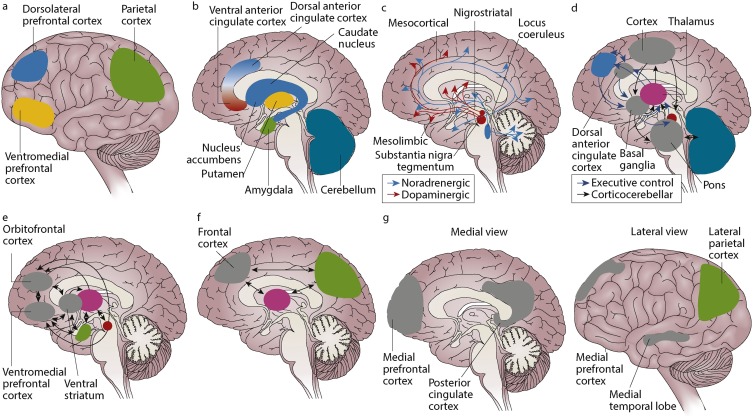Neuroscience & Biobehavioral Reviews ( IF 8.2 ) Pub Date : 2018-02-08 , DOI: 10.1016/j.neubiorev.2018.02.001 Stephen V. Faraone

|
Psychostimulants, including amphetamines and methylphenidate, are first-line pharmacotherapies for individuals with attention-deficit/hyperactivity disorder (ADHD). This review aims to educate physicians regarding differences in pharmacology and mechanisms of action between amphetamine and methylphenidate, thus enhancing physician understanding of psychostimulants and their use in managing individuals with ADHD who may have comorbid psychiatric conditions. A systematic literature review of PubMed was conducted in April 2017, focusing on cellular- and brain system–level effects of amphetamine and methylphenidate. The primary pharmacologic effect of both amphetamine and methylphenidate is to increase central dopamine and norepinephrine activity, which impacts executive and attentional function. Amphetamine actions include dopamine and norepinephrine transporter inhibition, vesicular monoamine transporter 2 (VMAT-2) inhibition, and monoamine oxidase activity inhibition. Methylphenidate actions include dopamine and norepinephrine transporter inhibition, agonist activity at the serotonin type 1A receptor, and redistribution of the VMAT-2. There is also evidence for interactions with glutamate and opioid systems. Clinical implications of these actions in individuals with ADHD with comorbid depression, anxiety, substance use disorder, and sleep disturbances are discussed.
中文翻译:

苯丙胺和哌醋甲酯的药理作用:与注意缺陷/多动障碍和其他精神疾病合并症的神经生物学有关
精神兴奋剂,包括苯丙胺和哌醋甲酯,是患有注意力缺陷/多动症(ADHD)的个体的一线药物治疗。这篇综述的目的是教育医生关于苯丙胺和哌醋甲酯之间的药理学和作用机制的差异,从而增强医生对精神刺激药的理解,以及它们在治疗可能合并精神病的多动症患者中的应用。2017年4月对PubMed进行了系统的文献综述,重点研究了苯丙胺和哌醋甲酯对细胞和大脑系统的影响。苯丙胺和哌醋甲酯的主要药理作用是增加中枢多巴胺和去甲肾上腺素的活性,这会影响执行和注意功能。苯丙胺的作用包括多巴胺和去甲肾上腺素转运蛋白抑制,水泡单胺转运蛋白2(VMAT-2)抑制和单胺氧化酶活性抑制。哌醋甲酯的作用包括多巴胺和去甲肾上腺素转运蛋白抑制作用,对1A型血清素受体的激动剂活性以及VMAT-2的重新分布。也有与谷氨酸和阿片样物质系统相互作用的证据。讨论了这些行为在患有合并症,抑郁,焦虑,药物滥用和睡眠障碍的ADHD患者中的临床意义。和重新分配VMAT-2。也有与谷氨酸和阿片样物质系统相互作用的证据。讨论了这些行为在患有合并症,抑郁,焦虑,药物滥用和睡眠障碍的ADHD患者中的临床意义。和重新分配VMAT-2。也有与谷氨酸和阿片样物质系统相互作用的证据。讨论了这些行为在患有合并症,抑郁,焦虑,药物滥用和睡眠障碍的ADHD患者中的临床意义。



























 京公网安备 11010802027423号
京公网安备 11010802027423号